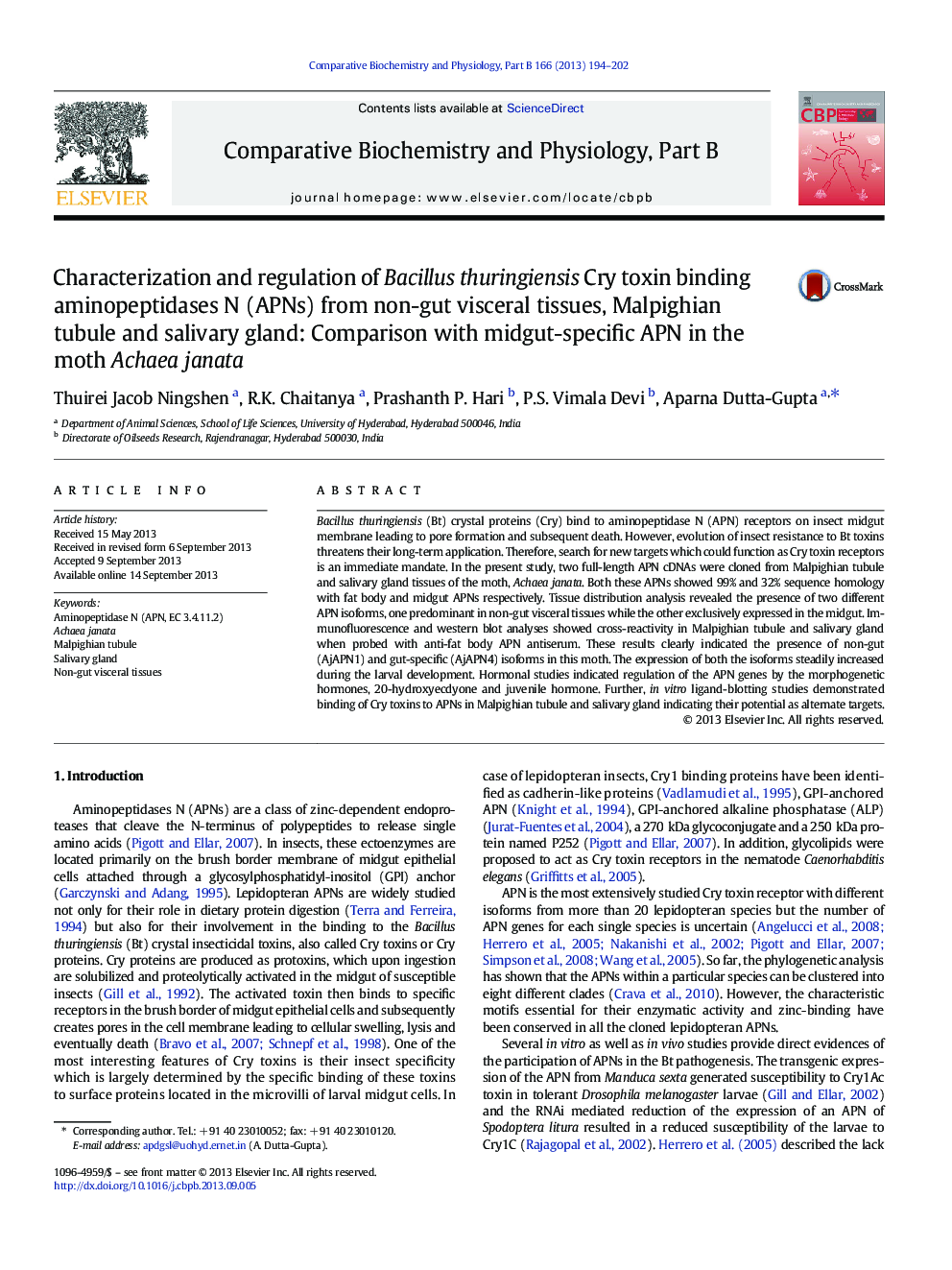| Article ID | Journal | Published Year | Pages | File Type |
|---|---|---|---|---|
| 1975417 | Comparative Biochemistry and Physiology Part B: Biochemistry and Molecular Biology | 2013 | 9 Pages |
Bacillus thuringiensis (Bt) crystal proteins (Cry) bind to aminopeptidase N (APN) receptors on insect midgut membrane leading to pore formation and subsequent death. However, evolution of insect resistance to Bt toxins threatens their long-term application. Therefore, search for new targets which could function as Cry toxin receptors is an immediate mandate. In the present study, two full-length APN cDNAs were cloned from Malpighian tubule and salivary gland tissues of the moth, Achaea janata. Both these APNs showed 99% and 32% sequence homology with fat body and midgut APNs respectively. Tissue distribution analysis revealed the presence of two different APN isoforms, one predominant in non-gut visceral tissues while the other exclusively expressed in the midgut. Immunofluorescence and western blot analyses showed cross-reactivity in Malpighian tubule and salivary gland when probed with anti-fat body APN antiserum. These results clearly indicated the presence of non-gut (AjAPN1) and gut-specific (AjAPN4) isoforms in this moth. The expression of both the isoforms steadily increased during the larval development. Hormonal studies indicated regulation of the APN genes by the morphogenetic hormones, 20-hydroxyecdyone and juvenile hormone. Further, in vitro ligand-blotting studies demonstrated binding of Cry toxins to APNs in Malpighian tubule and salivary gland indicating their potential as alternate targets.
